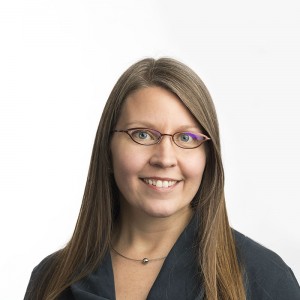
Last winter, SRG participated in The POD Initiative, an effort led by Portland State University’s Center for Public Interest Design with partners at City Repair and the Village Coalition. The intent was to explore a new model for how our architectural community might address growing concerns surrounding houselessness. Eventually the Mayor’s Office got involved and efforts resulted in the Kenton Women’s Village.
That wasn’t the end of the S.A.F.E. Pod’s story though.
For the last four years, PSU School of Architecture’s Diversion Studio has designed and built a stage for the Pickathon Music Festival with the goal of diverting material waste when deconstructed after the festival. Inspired by the success of the Kenton Women’s Village, CPID and PSU faculty and students conceived a new idea; perhaps the materials from the Pickathon stage could be used to build additional sleeping pods for new villages.
We were honored when the PSU design team approached us about using the S.A.F.E. Pod. It had now been tested and received positive feedback about the level of comfort and livability it provides. Additionally, the structure’s component-based design lent itself well to the possibility of deconstruction and reuse.
“We realized we had all this student effort and energy, and we opted for seeing how much social impact we could have.”
Travis Bell, Assistant Professor of Architecture at PSU
Before the Treeline Stage construction began, we altered the design slightly to make the construction of Pod 2.0 more affordable and generate less waste. The size of the structure, while conforming to the intent of the original exercise, increased the complexity of transport. To ease this, Pod 2.0’s assembly dimensions are scaled down. Material efficiency has also been maximized by slightly reducing the overall width, so the truss assembly can be constructed from two 8’ long 2x4 boards. Specific connections of the truss were simplified to remove costly brackets.
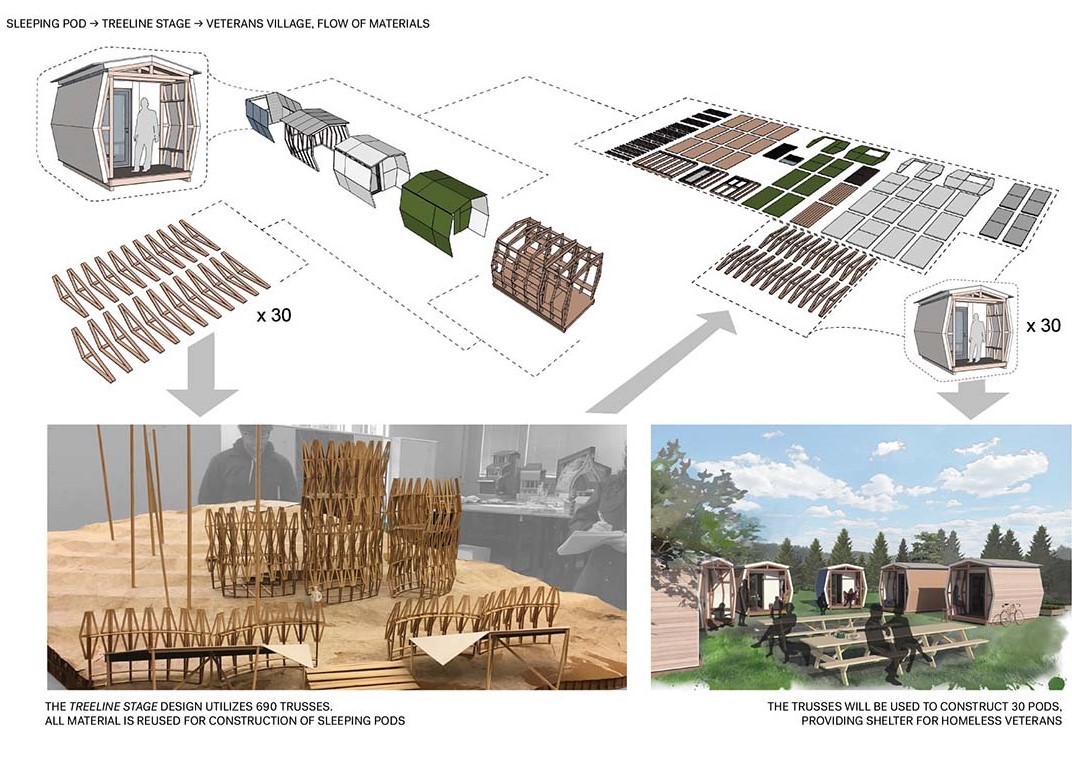
This improved truss serves as the base unit of design for the Pickathon Treeline Stage. PSU architecture students designed an interactive experience for this year’s festival. Four trusses are combined to fabricate a repeating unit, and these units are stacked and rotated to build tall towers. The towers are linked together to stabilize the structure. The resulting forms are impactful and beautiful and create spaces concert-goers can use to gather or quiet places to retreat and listen to the music from a unique perspective.
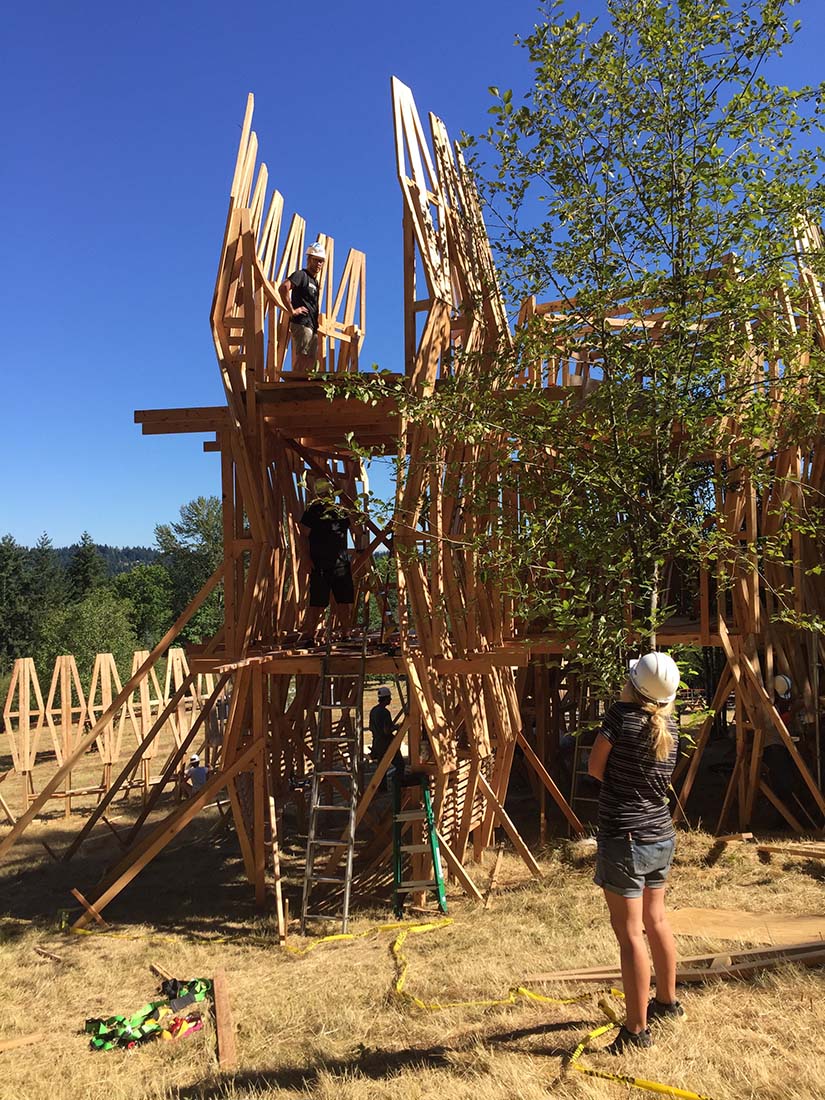
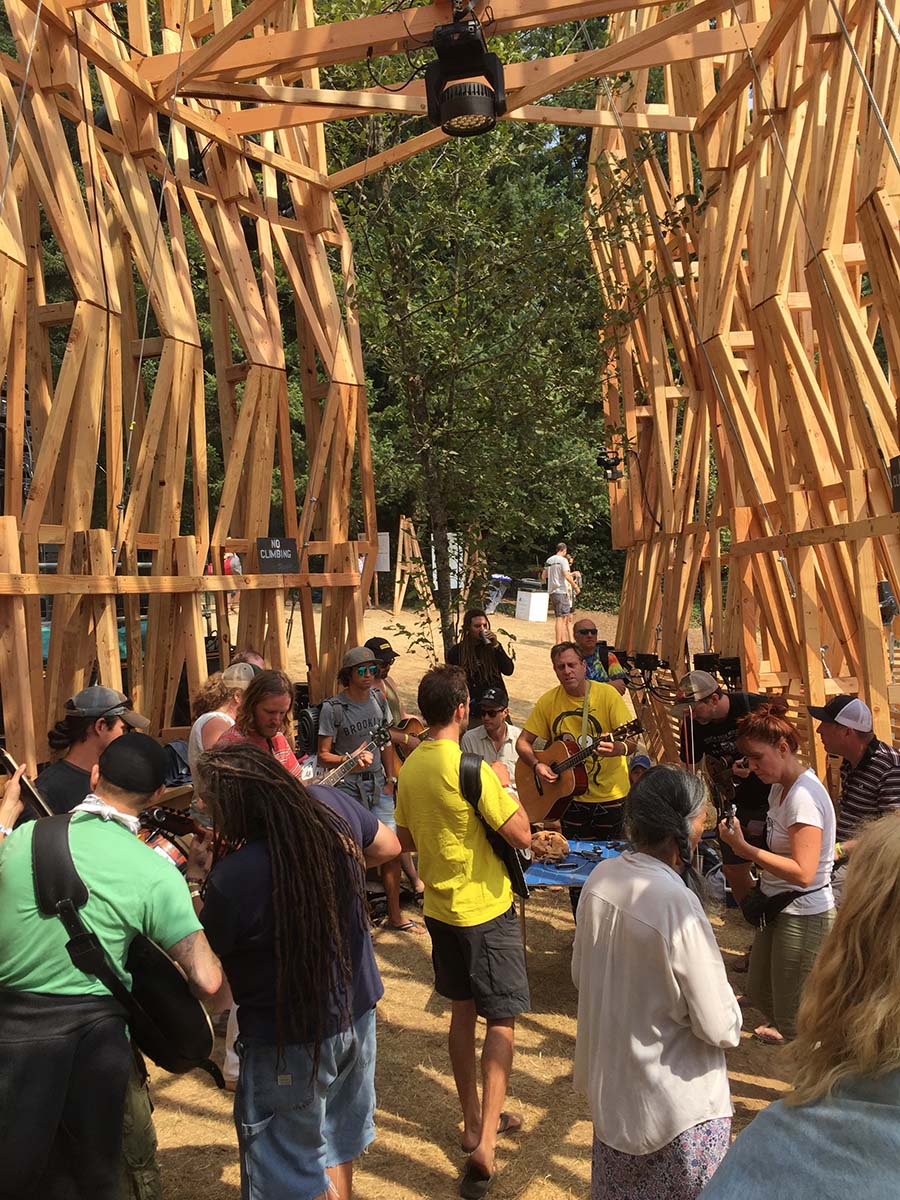
Adjacent to the stage, there was also a ‘Ghost Pod’ – a small open air enclosure built to replicate the form of the S.A.F.E. Pod. The supplementary structure contained interpretive displays describing the pod and stage design and the unique collaboration between community partners to make the next villages a reality. This served not only to educate attendees about new innovative solutions to the houselessness crisis, but also provided a glimpse into how it feels to occupy one of these unique spaces.
Witnessing the different ways that individuals chose to interact with the stage structure was equal parts fascinating and inspiring. During a live set, the social spaces offered an opportunity to find repose without forfeiting a direct and visceral connection to the energy of the performance. Late at night, Pickathon’s masterful lighting design transformed these unique objects into dynamic spatial experiences that provided a mesmerizing place for passers-by to pause and get lost in the ever-changing nature of the sculpture that surrounded them. And in the mornings, as the grounds came to life with anticipation for the day to come, the inward inflection of the form, coupled with ample seating and much-need shade, became an ideal community gathering place for spontaneous jam sessions between families and friends.
After the festival, the stage was deconstructed, the towers disassembled, and the trusses packaged into kits along with the remaining building supplies that will form 30 sleeping pods, destined for new villages in the City of Portland and Clackamas County, Oregon.
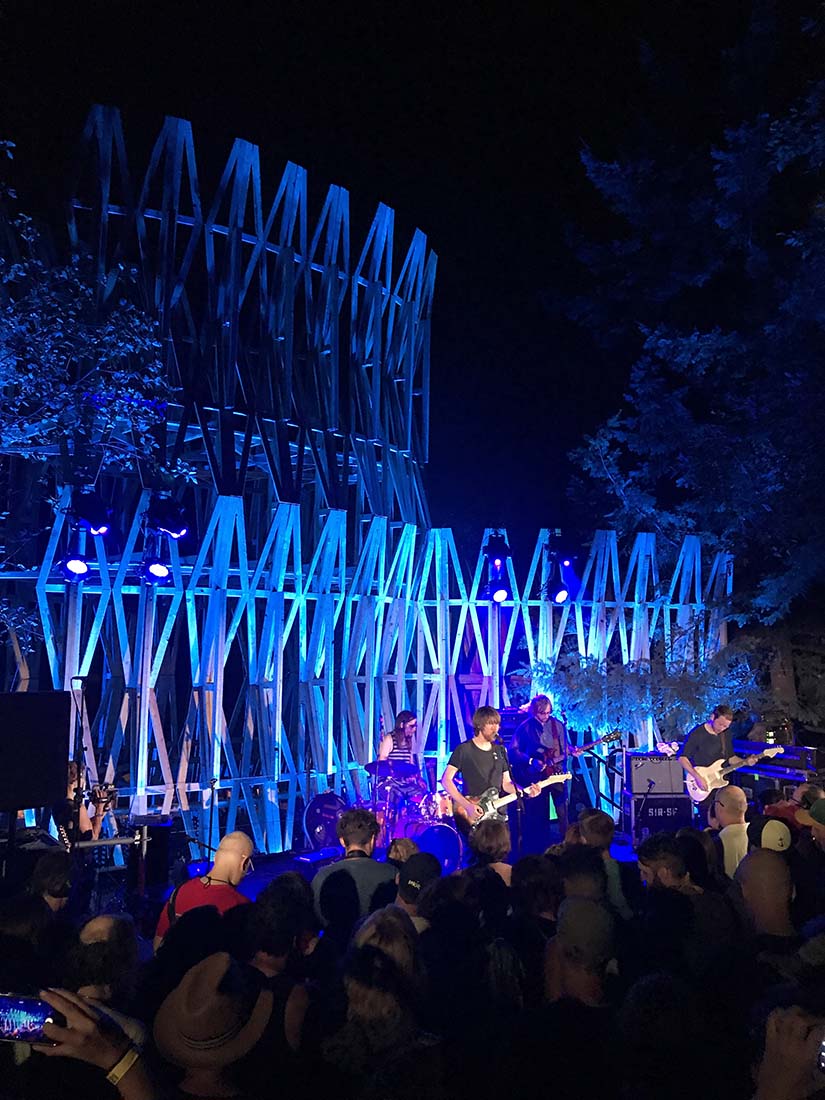
Looking back on this experience, I’m most impressed with the dedication and collaboration of so many students, industry professionals, professors, city and county employees, and music-loving volunteers. Not only was an amazing structure designed and built for a festival, but that positive energy will now be transferred into efforts to build the pods for future villages. These pods are not intended to be the solution to all problems surrounding houselessness in Portland. However, I do believe this kind of support, to provide safe and private shelter for a person or family in need, will serve as an important step toward a more stable situation.
It’s been inspiring to see a little hint of what we can accomplish, if only we dare to imagine it, and are willing to work together.
Media
This Music Festival Stage Will House Homeless Veterans, CityLab, August 4, 2017
PSU Transforms Pickathon Music Stage Into 'Sleeping Pods', Oregon Public Broadcasting, August 2017
Pickathon Festival stage, designed by PSU students, will be turned into transitional housing when the music stops, Archinect, August 2017


